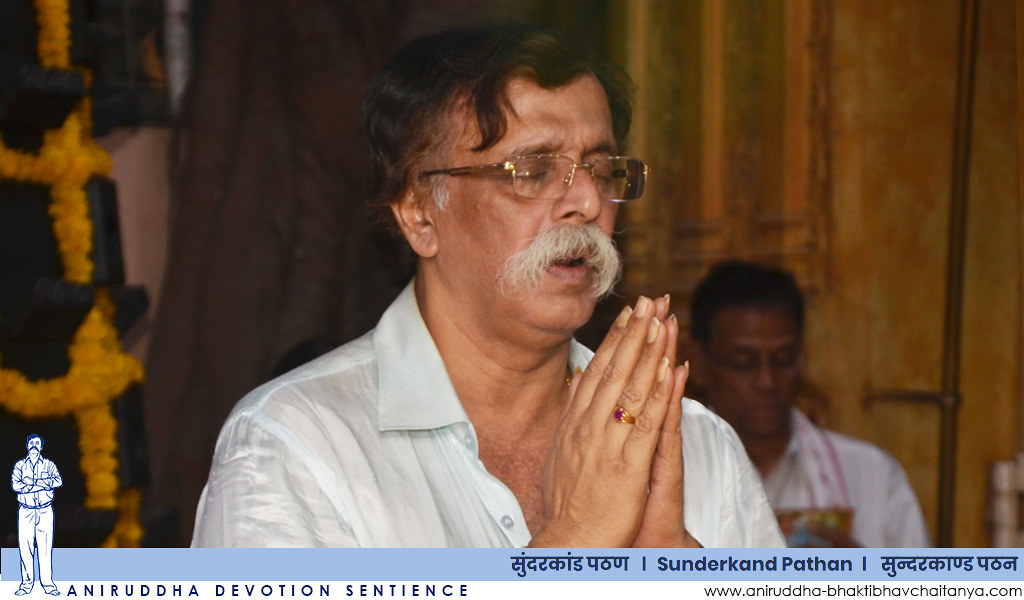Overview
Introduction to Sunderkand
Sunderkand is a sacred chapter from the epic Ramayana that focuses on the heroic deeds of Lord Hanuman. It is considered one of the most significant sections of the Ramayana and holds great importance in Hindu mythology. Sunderkand is a Sanskrit word that means ‘Beautiful Chapter’ and it truly lives up to its name. This chapter narrates the journey of Lord Hanuman to the island of Lanka in search of Sita, the wife of Lord Rama, who had been kidnapped by the demon king Ravana. Lord Hanuman’s devotion, strength, and intelligence are showcased throughout Sunderkand, making it a powerful and inspiring story. The chapter highlights Lord Hanuman’s unwavering dedication to Lord Rama and his selflessness in serving his Lord. It is believed that reciting or listening to Sunderkand brings blessings, protection, and divine grace. Lord Hanuman is revered as a symbol of courage, devotion, and loyalty, and Sunderkand beautifully captures these qualities.
Significance of Sunderkand
Sunderkand is a chapter from the Indian epic Ramayana, which holds great significance in Hindu mythology. It is a story that revolves around Lord Hanuman and his journey to find Sita, the wife of Lord Rama, who has been kidnapped by the demon king Ravana. The word ‘Sunderkand’ translates to ‘beautiful episode’ and it is believed to be an embodiment of devotion, strength, and courage. The significance of Sunderkand lies in its ability to connect individuals with the divine. It serves as a reminder of the power of faith and the importance of embracing one’s spiritual journey. Through the verses of Sunderkand, readers are transported to a world of devotion and divine intervention, where Lord Hanuman’s unwavering dedication inspires them to overcome obstacles and find solace in the embrace of the divine.
Summary of Sunderkand
Sunderkand is a sacred chapter in the Hindu epic Ramayana. It is composed of 68 verses and is considered to be one of the most important sections of the epic. Sunderkand narrates the journey of Hanuman to Lanka in search of Sita, the wife of Lord Rama, who has been abducted by the demon king Ravana. The chapter highlights Hanuman’s devotion, courage, and strength as he overcomes various obstacles to find Sita and deliver Lord Rama’s message of love and reassurance. Sunderkand is often recited or listened to with great reverence and devotion by devotees, as it is believed to bring blessings, protection, and spiritual connection with the divine.
Historical Background

Origin of Sunderkand
Sunderkand is a chapter from the epic Ramayana, written by the sage Valmiki. It is considered to be one of the most important and revered chapters in the entire epic. Sunderkand is a Sanskrit word, where ‘Sunder’ means beautiful and ‘Kand’ means chapter. This chapter focuses on the adventures of Hanuman as he searches for Sita, the wife of Lord Rama, who has been abducted by the demon king Ravana. It is believed that reciting or reading Sunderkand helps in connecting with the divine and brings peace and prosperity to one’s life.
Importance in Hindu Mythology
The Sunderkand is a significant part of the Hindu epic Ramayan. It holds immense importance in Hindu mythology as it depicts the journey of Lord Hanuman to find and deliver a message to Lord Rama. This chapter showcases the devotion, loyalty, and strength of Hanuman, who is considered a symbol of devotion and selflessness. The Sunderkand is believed to bring peace, prosperity, and protection to those who recite it with devotion. It is often recited to seek blessings, overcome obstacles, and connect with the divine. The Ramayan, of which the Sunderkand is a part, is a timeless tale that teaches valuable life lessons and upholds the ideals of righteousness and dharma.
Sunderkand in Ramayana
Sunderkand is a chapter in the great Indian epic, Ramayana. It is considered one of the most important chapters in the entire epic. Sunderkand narrates the journey of Hanuman to Lanka in search of Sita, the wife of Lord Rama. This chapter is filled with powerful verses and vivid descriptions of Hanuman’s adventures and encounters. It showcases Hanuman’s unwavering devotion and his immense strength. Sunderkand is often recited or chanted by devotees as it is believed to bring blessings and protection. It is also available for download for those who want to listen or read it.
Structure and Content

Chapters and Verses
The Sunderkand is a chapter in the Indian epic, the Ramayana. It is considered one of the most important chapters as it focuses on the journey of Hanuman to search for Sita, the wife of Lord Rama. The chapter is divided into several verses, each highlighting different aspects of Hanuman’s journey and his encounters with various characters. Some of the key verses include the description of Hanuman’s leap across the ocean, his meeting with the demon Surasa, and his encounter with the demon king Ravana. These passages highlight the bravery and devotion of Hanuman, making them significant and deserving of emphasis.
Themes and Symbolism
The themes and symbolism in Sunderkand revolve around the Hindu deity Hanuman and his devotion to Lord Rama. Hanuman is portrayed as the epitome of devotion, strength, and loyalty. His unwavering faith in Lord Rama and his dedication to serving him are highlighted throughout the text. The symbolism in Sunderkand also represents various aspects of life and spirituality. For example, the crossing of the ocean by Hanuman symbolizes overcoming obstacles and challenges in one’s journey towards self-realization. The search for Sita, Lord Rama’s wife, represents the eternal quest for truth and righteousness. Overall, Sunderkand is a profound spiritual text that explores themes of devotion, faith, and the pursuit of truth.
Key Characters in Sunderkand
Sunderkand is a sacred chapter of the Hindu epic Ramayana. It is centered around the journey of Hanuman to Lanka in search of Sita, the wife of Lord Rama. In Sunderkand, several key characters play significant roles. Hanuman, the mighty monkey god, is the protagonist who showcases his immense strength, devotion, and intelligence. Sita, the virtuous and loyal wife of Lord Rama, is the reason for Hanuman’s mission. Ravana, the ten-headed demon king of Lanka, is the antagonist who has abducted Sita. Lord Rama, the seventh avatar of Lord Vishnu, is the divine figure who guides and supports Hanuman in his quest. These key characters in Sunderkand bring depth and meaning to the narrative, allowing readers to experience the divine power and the triumph of good over evil.
Spiritual Significance

Devotion and Surrender
Devotion and surrender are two key aspects of connecting with the divine. Devotion is the unwavering love and dedication towards a higher power. It is the deep sense of reverence and adoration that one feels towards the divine. Surrender, on the other hand, is the act of letting go of control and ego, and placing complete trust in the divine. It is the recognition that the divine knows what is best for us and surrendering to its will. Both devotion and surrender are essential in establishing a strong connection with the divine. When we approach our spiritual practices with devotion and surrender, we open ourselves up to receiving divine guidance and blessings. It is through devotion and surrender that we can experience a profound sense of peace, joy, and fulfillment in our spiritual journey.
Connecting with Lord Hanuman
Connecting with Lord Hanuman is a spiritual experience that transcends boundaries and connects us to the divine. Hanuman, the powerful deity known for his unwavering devotion to Lord Rama, serves as a symbol of strength, courage, and loyalty. Through prayer, meditation, and recitation of the Sunderkand, devotees seek to establish a deep connection with Hanuman and seek his blessings. The act of connecting with Lord Hanuman allows us to tap into his divine energy and receive guidance, protection, and inspiration in our lives. It is a sacred practice that brings solace, peace, and a sense of belonging to the devotee.
Benefits of Reciting Sunderkand
Reciting Sunderkand has numerous benefits that can positively impact one’s life. It is believed to bring peace, harmony, and spiritual growth to the reciter. Sunderkand is a chapter from the Indian epic Ramayana and is dedicated to Lord Hanuman. By reciting Sunderkand, individuals can connect with the divine and seek blessings for their well-being. It is said to help in overcoming obstacles, gaining strength, and finding inner peace. Additionally, listening to Sunderkand recitation or watching Sunderkand videos can further enhance the experience and deepen the spiritual connection. The soothing chants and melodious tunes in these videos create a serene atmosphere, allowing individuals to immerse themselves in the divine energy of Sunderkand. Overall, reciting Sunderkand and engaging with its teachings can bring immense spiritual and personal growth.
Impact on Devotees

Personal Experiences
In the section of Personal Experiences, the SunderKand path has been a transformative journey for many devotees. People from all walks of life have shared their profound encounters with the divine while reciting the SunderKand. The path has brought solace, healing, and a deep sense of connection with Lord Hanuman. One devotee, in particular, shared how reciting the SunderKand helped them overcome a difficult phase in their life and find inner strength. Another devotee mentioned how the path brought them clarity and guidance during challenging times. These personal experiences highlight the power and significance of the SunderKand path in connecting with the divine.
Transformation and Healing
The Sundara Kanda book is a significant part of the Indian epic Ramayana. It is also known as the ‘Beautiful Book’ and is centered around the adventures of Hanuman. This section of the epic focuses on the transformation and healing that takes place through Hanuman’s journey. As he embarks on his mission to find Sita, the wife of Lord Rama, who has been kidnapped by the demon king Ravana, Hanuman encounters various challenges and overcomes them with his unwavering devotion and strength. His actions and devotion serve as an inspiration for readers to believe in the power of faith and determination. Through his selfless acts, Hanuman showcases the transformative power of love and devotion, reminding us that with the right mindset and dedication, we can overcome any obstacles and find healing in our own lives.
Community and Unity
In today’s fast-paced world, community and unity play a crucial role in bringing people together. It is through strong communities and a sense of unity that we can overcome challenges and create a better world. Communities provide support, friendship, and a sense of belonging, which are essential for individual and collective well-being. Unity, on the other hand, promotes understanding, cooperation, and collaboration, allowing us to work towards common goals and make a positive impact on society. Together, communities and unity have the power to bridge gaps, break down barriers, and foster a sense of togetherness in an increasingly interconnected world.
Conclusion
Power of Sunderkand
Sunderkand is a powerful scripture in Hinduism that holds immense significance and is revered by devotees. It is a chapter from the epic Ramayana, written by the sage Valmiki. The Power of Sunderkand lies in its ability to connect devotees with the divine. This sacred text is believed to have the power to remove obstacles, bring peace, and fulfill desires. Sunderkand is a source of spiritual strength and solace for millions of people around the world. By reciting and understanding the verses of Sunderkand, devotees can experience a deep sense of connection with Lord Hanuman and Lord Rama, and seek their blessings in times of need. The profound impact of Sunderkand on the lives of devotees is evident in the faith and devotion with which it is practiced and revered.
Continuing the Tradition
Continuing the Tradition
The tradition of Sunderkand holds a significant place in Hindu culture. It is a sacred text that connects devotees with the divine. Sunderkand is a chapter from the Indian epic Ramayana, which narrates the journey of Lord Hanuman in search of Goddess Sita. This chapter is known for its powerful verses and profound teachings. Through Sunderkand, devotees discover the importance of faith, devotion, and perseverance. It serves as a guide for navigating through life’s challenges and finding solace in the divine. The recitation of Sunderkand is believed to bring blessings and protection from negative energies. It is a tradition that has been passed down through generations, keeping the spiritual connection alive. By exploring the depths of Sunderkand, one can embark on a transformative journey of self-discovery and spiritual growth.
Embracing the Divine
Embracing the Divine is a transformative experience that allows us to connect with the higher power and find solace in its presence. It is a journey of self-discovery and spiritual growth, where we surrender ourselves to the divine energy that surrounds us. Through prayer, meditation, and reflection, we open our hearts and minds to receive the blessings and guidance of the divine. This profound connection brings a sense of peace, clarity, and purpose to our lives. As we embrace the divine, we let go of our fears and insecurities, trusting that we are being guided and protected. It is through this surrender that we find strength and resilience in the face of challenges and adversity. Embracing the divine is not just a one-time act, but a continuous practice of cultivating a deep and meaningful relationship with the divine. It is an invitation to experience the infinite love, compassion, and wisdom that the divine offers us.
Author Profile

Latest entries
- 28 June 2025BlogHow to Choose the Best High-Yield Savings Account with 5%+ Interest in India (2025 Guide)
- 28 December 2024Blog13 High CPC Blog Niche for 2025
- 28 December 2024BlogTop 6 Employee Management Software for Small Businesses
- 19 December 2024BlogShri Hanuman Chalisa in Hindi Text with English Translation

